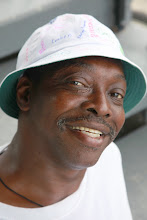A History of the Gullah People

The coastline of South Carolina, Georgia and northern Florida is home to an estimated 300,000 Gullah people. The Sea Islands off the coast of South Carolina, among them Edisto Island, Coosaw Island, Dafuskie Island, and St. Helena Island, have provided Gullah roots to millions of African Americans. Thousands of enslaved Africans survived the middle passage to reach Sea Island shores. The climate and isolation of this area were integral to the development of Gullah culture. The rice plantations of the low country were deemed unhealthy for white owners and their families. Relatively autonomous, Sea Island Africans were freer to speak in their own languages and dialects, thus preserving more of their African culture. Low country slave owners also tended to buy captives from the same areas of west Africa who also spoke similar languages. With the people, Mende and Kissi, Malinke and Bantu came the soul of Africa. In their language, their music, their skills and their foods persist the rich legacy of a hundred tribes.
The words "Gullah and Geechee" have come to describe that legacy. The Gullah language, a blend of African and European tongues, was born in the holding pens of Africa's slave coast, but matured in the isolated plantations of the coastal south. Gullah accents, words and intonations echo across these islands today. Here survive the Gullah "shout". The Gullah rhythyms translated from forbidden drums and the oldest plantation melodies, are reminders of a saved and sacred past.
Still standing are the Prarie Houses, revered since slavery day beginnings. Within the walls of these small buildings, religious worship and African elder culture combined to uplift and console the people. This rich culture flourishes today. Sweet grass basket weavers make their exquisite wares in the ancestral ways. African "long strip" quilting continues and chefs keep to the flavors of the African rice coast. Story tellers speak their truths, spinning their tales while entwining fun and wisdom. Drummers drum and dancers dance. Choirs preserve the haunting songs and old rhythyms.
This is the heritage of a people who have survived.
Preserve Gullah culture.

